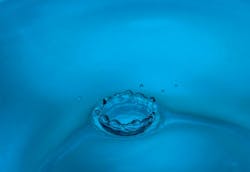Jesus “Henry” Avina is general manager of R.O. UltraTec USA, Inc. He can be reached at 760.723.5417, or by e-mail at [email protected].
undefinedUpdated 10/28/19
Every year, thousands of dollars are wasted in the form of membrane replacements because individuals overlook the negative effects of cold water on reverse osmosis (RO) system performance. An assumption is usually made that the membranes have fouled, when in actuality, the temperature of the feedwater has just dropped and caused the membrane production to be significantly reduced. Often, this is because individuals forget to take into account the lower feedwater temperatures experienced during the winter season.
RO system manufacturers can count on receiving phone calls in which customers say, “For some reason, the system is producing 30 to 50% less product water.” In addition, the customer then says, “The system’s feedwater conditions have not changed,” not taking into account the feedwater temperature.
This article focuses on one of the many variables to consider when troubleshooting RO system production loss—feedwater temperature changes.
Feedwater Viscosity at Various Temperatures
To truly understand the effects of production loss due to temperature changes, we need to look into the varying viscosity of the feedwater at various temperatures. The viscosity of a liquid is a measure of its inability to flow, and this is measured in Ns/m2 (SI units) or poise (P) or centipoise (cP).
1 P = 0.1 Ns/m2
1 cP = 0.001 Ns/m2
The viscosity of water varies with temperature. At 293 K (20°C), the viscosity of water is 1.002 cP. Water’s viscosity decreases as temperature increases and vice versa.
To demonstrate the differences of viscosities in a liquid with varying temperatures, mildly heat a bottle of honey while chilling a second bottle. Pour both bottles simultaneously. The heated honey will flow at a much faster rate than the chilled honey due to the differences in temperature and viscosity. In theory, this is the same effect temperature has on water at a molecular level.
When water molecules permeate the semipermeable membrane material at optimal temperatures, such as 77°F, the viscosity of the water is lower than at 50°F. For example, a typical low energy high-flow 4- by 40-in. RO membrane element is designed to operate at 150 psi and is rated to produce 2,500 gal per day (gpd) at 77°F. At 50°F, the same membrane element’s production would be reduced to 1,209 gpd. This equates to an approximate production loss of 51.61%.
While the effect of temperature on water is not enough to fully explain the drop in flow, the change in the membrane’s ability to interact with water does vary in a similar fashion. Because differences in chemistry and manufacturing processes produce different membranes, correction tables or factors vary for different manufacturers.
Countering System Production Loss
There are multiple methods that can be implemented in order to counter an RO system’s production loss. This article provides two possible solutions. One method is to increase the feedwater pressure of the RO system. For every 10°F decrease of the feedwater temperature, you can increase the feedwater pressure by 15%. In some cases, however, this would be impractical due to the pressure limitations specified by the RO system manufacturer.
The second method is the use of extra low energy membrane elements. These types of membrane elements contain higher fluxing membranes. They are designed to operate at lower pressures (100 psi), which means that if you take an RO system designed with a single 4- by 40-in. membrane element, which would produce 2,500 gpd at 150 psi, with a feed TDS of 550 at 77°F, and a 15% recovery ratio, a change to the system’s feedwater temperature to 50°F will drop the production rate to 1,209 gpd. If you were to take the same RO system under the same test conditions and replace the membrane element with an extra low energy membrane element (100 psi), the system’s production would increase to 1,771 gpd, thus equating to a 562 gal, or 31.7% increase in production.
If you suspect the feedwater temperature is the cause of production loss, you can use a temperature correction chart to determine the system’s temperature-corrected production. An example temperature correction chart is available at www.roultratec.com/ products/membraneelements/commercial.html. Additionally, many membrane manufacturers supply performance normalization software to normalize system performance.
Corrected Flow Rate = (Measured Flow Rate)*(Temperature Correction Factor @ Feedwater Temperature)
Although there are many variables presented when troubleshooting RO, it is important to take feedwater temperature changes into consideration when designing an RO system to ensure proper system production.



